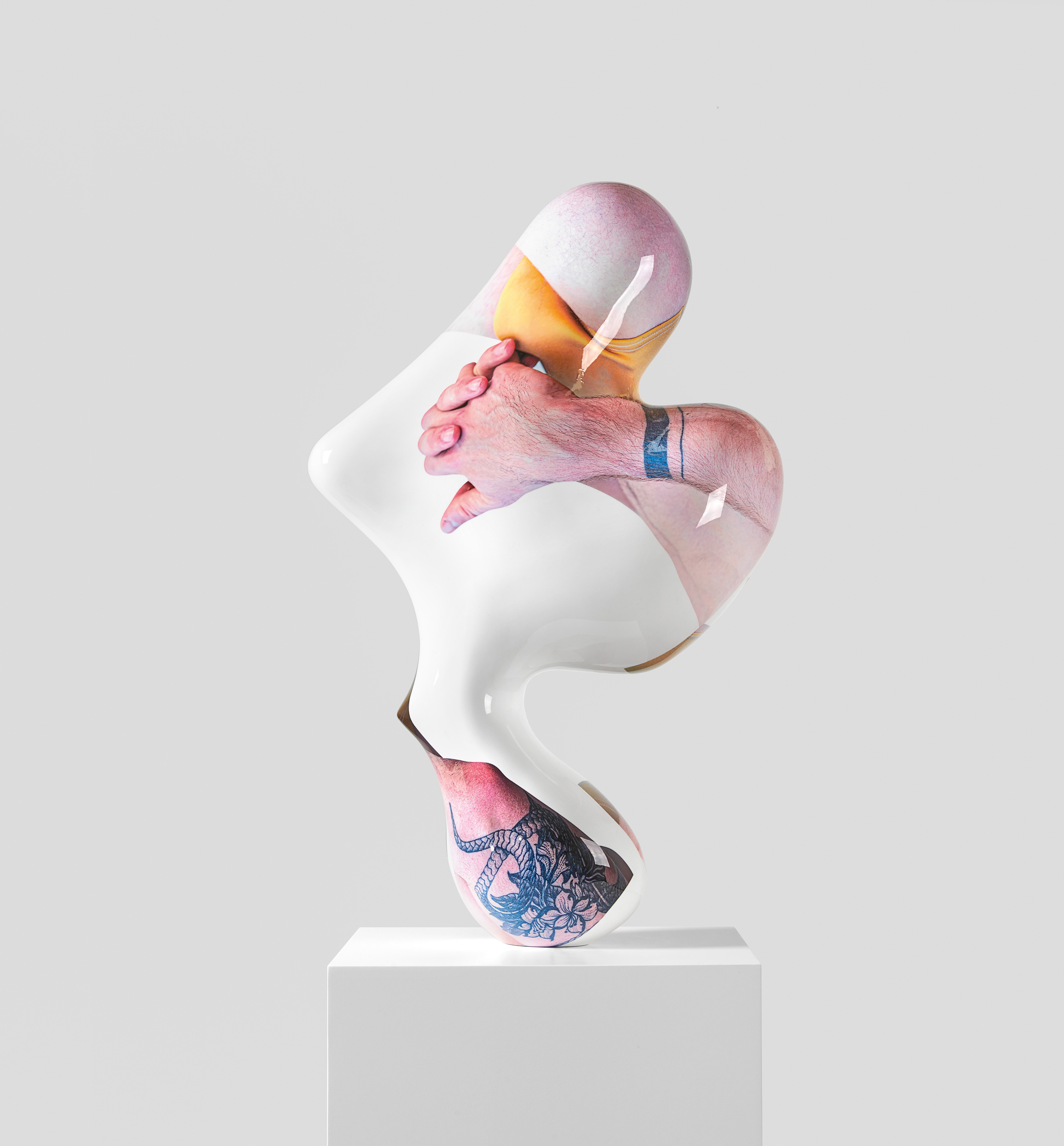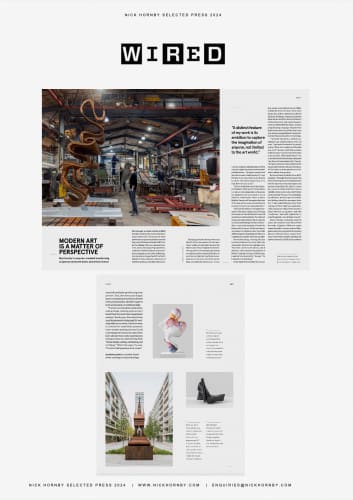British sculptor Nick Hornby uses computer modeling to make mashups of famous artworks and historical figures that shift and change depending on your perspective.

You can get a crash course in Nick Hornby's work in the span of an hour-long London walk. The artist has three permanent sculptures installed across the city, metal silhouettes that start off familiar but transform depending on your vantage point. In St. James, his conquering equestrian, modeled on Richard I, becomes an amorphous squiggle as you circle; while in Kensington, his take on Caspar David Friedrich's Wanderer turns abstract; and a bust of Nefertiti doubles as the Albert Memorial.
Raising questions about power and the role of the monument, the trio are a clever combo of craft and concept. They're also feats of digital innovation. The equestrian, for example, started out as a digital model scripted in Python. It was then unrolled into individual components to be laser-cut from metal, then assembled by fabricators. "It was a lovely, seamless relationship between concept, digital processes, and mechanical fabrications-165 pieces manipulated into the six-and-a-half ton object," says Hornby from his studio in northwest London. "But when people look at it, they don't see that at all."
"I like to think that one of the distinctive features of my work is its ambition to capture the imagination of anyone, not limited to the art world; to try to address complicated ideas in plain English. Anyone will recognize the trope of the man on the horse and will have a reaction to how I have manipulated it."

Resting Leaf (Joe) is from a set of autobiographical works created using hydrographics-each resin sculpture is dipped into a wet medium containing an image transfer. PHOTOGRAPH: BENJAMIN WESTOBY
This kind of technical-conceptual wizardry is Hornby’s calling card. Favoring the screen over the sketchpad, he uses 3D modeling as the foundation for abstract sculptures that reference the art-historical canon and challenge notions of authorship—contorted mashups of works by Hepworth, Brancusi, Rodin, and more; the profile of Michelangelo's David extruded to a single point, legible only from above.
He started young, creating life-size terracotta figures in school while his classmates labored over simpler pots. “But then I went to art school, and it was like, I didn't want to do pastiche of Rodin. I wanted to be part of the future. I wanted to be innovative,” he says. “So I jumped on technology.”
At the Slade School of Fine Art in London, where he enrolled in the late 1990s, Hornby thrived in the new. There were forays into video; a semester at the Art Institute of Chicago, where he joined the artist-hacker collective Radical Software/Critical Artware; and musical experiments with MAX MSP, the object-oriented programming language employed by Radiohead in the early 2000s. But it was only after pursuing a master’s in his thirties that his career took its current shape.
“I actually had quite a radical sea change in my relationship to tech,” he says. “I got quite frustrated by people saying, ‘Wow, that's really cool. How did you do it?’ because I find that question really boring. I'm much more interested in the question, ‘What does it mean?’” So, over the past decade Hornby has eliminated “any form of human subjectivity,” he says. The wires and screens were obscured, the rough edges erased with laser precision. All the better to invite questions of substance rather than process.

Face-on, Do It All presents as a realistic silhouette of the Albert Memorial, but step around 90 degrees to its left or right, and it transforms into a profile of the icnoic Nefertiti bust in Berlin's Neues Museum collection.
PHOTOGRAPH: LUCA PIFFARETTI
But now Hornby feels his focus shifting again. “I thought that the reason I had been embracing this perfect digital realm was for rigorous conceptual questions around authorship. But when I turned 40, I came to realize that there was no visibility of me in my work at all. I’d eliminated myself,” he says. It’s something, on reflection, he ties in part to ambivalent feelings about his own queer identity. “I only realized 15 years later [after coming out] that I had been systematically erasing my subjectivity because I didn't feel that my opinion—and who I really was—was valid, legitimate, or something that I was willing to reveal.”
After a decade reckoning with the canon, he’s ready to insert himself into the work. A glimpse of this new stance comes through in a recent series of fiberglass sculptures wrapped in the liquefied photos of former lovers using a technique called water transfer-printing. (He started the work in 2020, in the month he turned 40 and broke up with a long-term partner). And, after three years largely spent coordinating the creation of three colossal monuments, Hornby is eager to level up his hands-on technical skills.
“I've been so enmeshed in production, making things, realizing projects, that I haven't had very much time to experiment and play,” Hornby says. Now there’s time to get his parametric design and 3D-modeling skills up to scratch, to find new ways to combine his established processes (water transfer-printing on bronze?) and to investigate the new tech on his radar. There have already been some experiments with generative AI, which Hornby finds “intoxicatingly exciting, exhilarating, and terrifying.” “Watch this space,” he says. “I'm just at the beginning of my career.”
This article first appeared in the March/April 2024 print edition of WIRED UK magazine.
